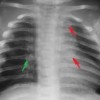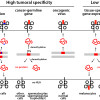Epidemiologic differences between sexual and physical child abuse
Abstract
Sexual and physical child abuse are assumed to differ; however, these differences have not been well characterized epidemiologically. Furthermore, despite assumed differences, these types of abuse are often analyzed as one entity. This can have significant effects on assessment of risk and recommendations for intervention.… Read more





